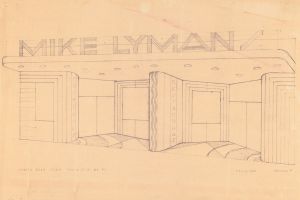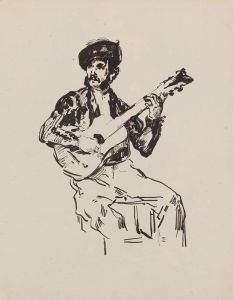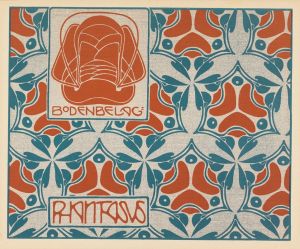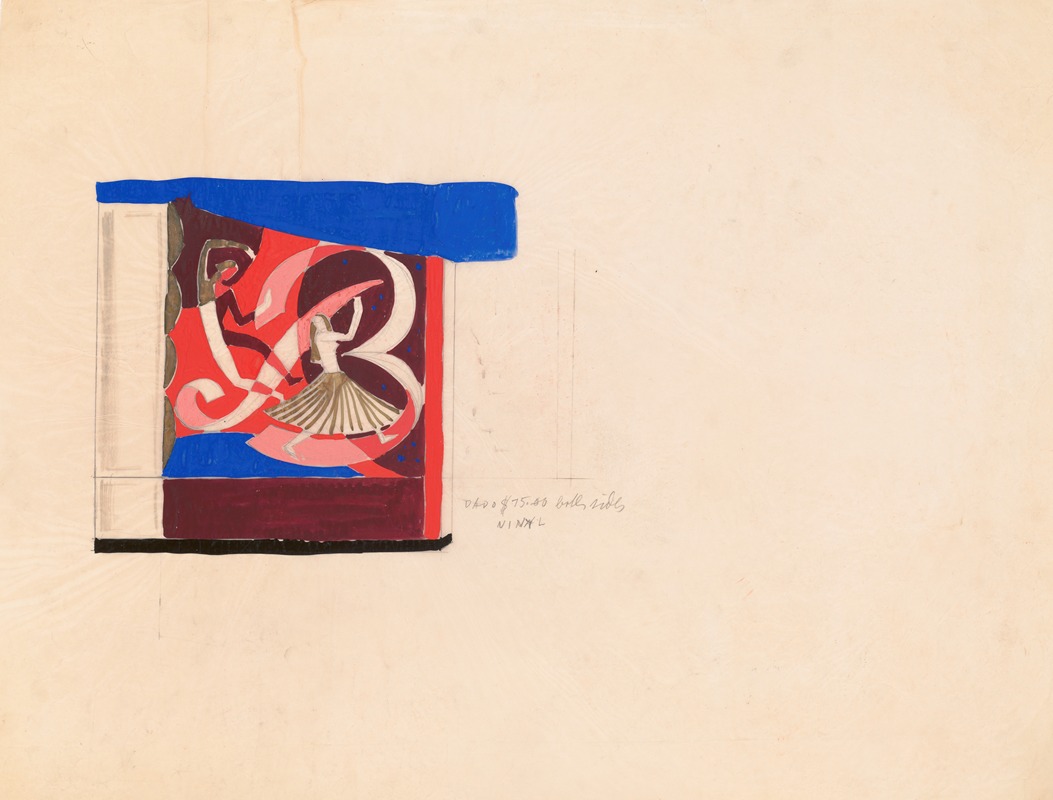
Design for mural inside of theater.] [Interior wall mural study
A hand-painted replica of Winold Reiss’s masterpiece Design for mural inside of theater.] [Interior wall mural study, meticulously crafted by professional artists to capture the true essence of the original. Each piece is created with museum-quality canvas and rare mineral pigments, carefully painted by experienced artists with delicate brushstrokes and rich, layered colors to perfectly recreate the texture of the original artwork. Unlike machine-printed reproductions, this hand-painted version brings the painting to life, infused with the artist’s emotions and skill in every stroke. Whether for personal collection or home decoration, it instantly elevates the artistic atmosphere of any space.
Winold Reiss (1886–1953) was a German-American artist and designer known for his contributions to modernist art and design in the United States. He was particularly celebrated for his murals, portraits, and graphic designs, which often reflected his interest in diverse cultural traditions and his commitment to blending modernist aesthetics with rich, vibrant imagery. One of his notable works is the "Design for mural inside of theater," an interior wall mural study that exemplifies his artistic approach.
This mural study was created as part of Reiss's broader work in designing public and commercial spaces, particularly theaters, restaurants, and other venues where art could enhance the architectural environment. Reiss was known for his ability to integrate art into functional spaces, creating designs that were both visually striking and harmonious with their surroundings. His mural studies often featured bold geometric patterns, dynamic compositions, and vivid colors, reflecting his training in Germany and his exposure to modernist movements such as Art Deco.
The "Design for mural inside of theater" demonstrates Reiss's skill in creating artwork that was both decorative and narrative. While specific details about the theater for which this mural was intended are not readily available, the study itself showcases his characteristic style. The composition likely includes stylized figures, abstract forms, or cultural motifs, as these were common elements in his work. Reiss often drew inspiration from a wide range of sources, including Native American art, African art, and European modernism, which he synthesized into a unique visual language.
Reiss's murals were highly regarded during his lifetime, and he received numerous commissions for public and private spaces. His work contributed to the development of a distinctly American modernist aesthetic, and he was instrumental in introducing European modernist ideas to the United States. His designs often emphasized the interplay between art and architecture, creating immersive environments that engaged viewers and enhanced the spaces they inhabited.
Although the specific theater and context for this mural study are not documented, the work remains an important example of Reiss's artistic legacy. It reflects his dedication to creating art that was both innovative and accessible, bridging the gap between fine art and design. Today, Winold Reiss is remembered as a pioneer in modernist design and a key figure in the history of American mural art.






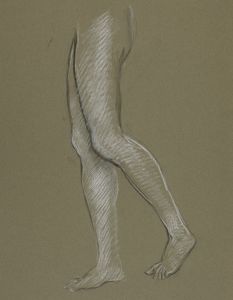
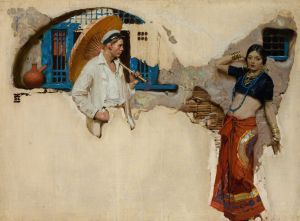
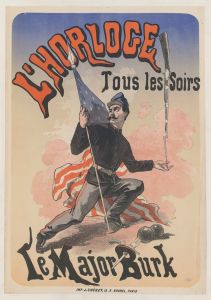
![[Design for mural in unidentified bar or restaurant.] [Study for mural]](/imgs/249261/s/winold-reiss-design-for-mural-in-unidentified-bar-or-restaurant-study-for-mural-93fd9e8e.jpg)
![Designs for Shellball Apartments, 8300 Talbot St. at Lefferts Blvd., Kew Gardens, New York, NY.] [Perspective drawing of lobby](/imgs/249322/s/winold-reiss-designs-for-shellball-apartments-8300-talbot-st-at-lefferts-blvd-kew-gardens-new-york-ny-perspective-drawing-of-lobby-e19c70e0.jpg)
![Graphic design for cover of Survey Graphic Magazine; ‘The British and Ourselves’.] [Drawing with British Parliament and US Capitol Building](/imgs/249351/s/winold-reiss-graphic-design-for-cover-of-survey-graphic-magazine-the-british-and-ourselves-drawing-with-british-parliament-and-us-capitol-building-a38e50da.jpg)


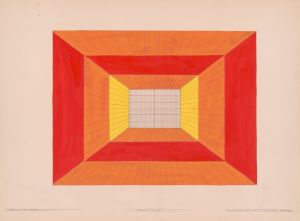
![Miscellaneous small sketches for inlaid table tops.] [Design with red geometric motif](/imgs/249442/s/winold-reiss-miscellaneous-small-sketches-for-inlaid-table-tops-design-with-red-geometric-motif-c586b6d.jpg)
